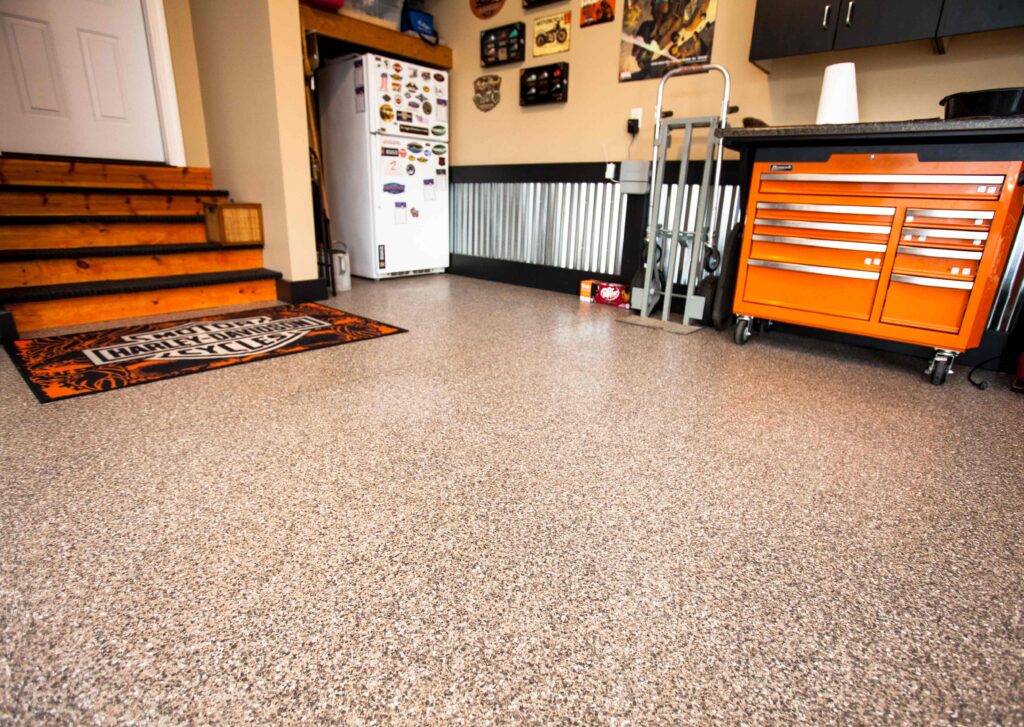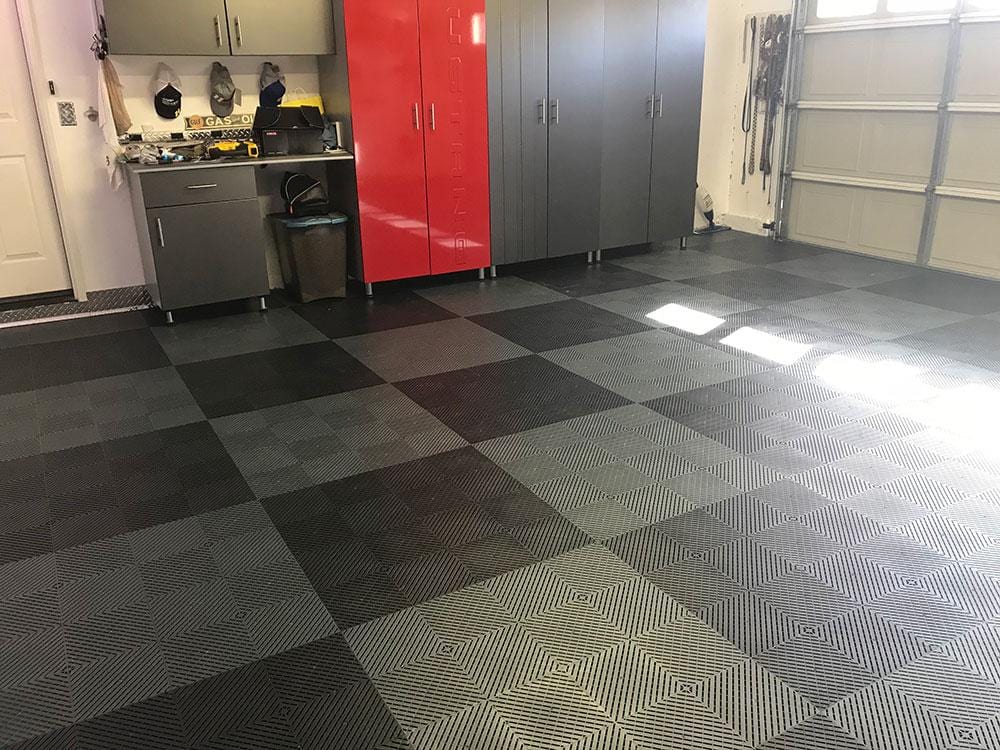Garage Floor Chandler AZ stands out as a popular choice due to its durability, versatility, and aesthetic appeal.

Epoxy Flooring vs. Other Garage Floor Coating Options
1. Epoxy Flooring
- Cost: Epoxy flooring typically ranges from $3 to $12 per square foot, depending on factors such as the quality of materials, surface preparation requirements, and customization options (e.g., decorative flakes, metallic pigments). While initial installation costs may be higher compared to other options, epoxy flooring offers long-term value due to its durability and longevity.
- Durability: Epoxy flooring is highly durable, resistant to stains, chemicals, abrasion, and impact. It forms a thick, seamless surface that protects the underlying concrete from moisture, oil, and other contaminants, extending the lifespan of the garage floor.
- Maintenance: Epoxy flooring is relatively low maintenance and easy to clean. Regular sweeping and occasional mopping with a mild detergent are usually sufficient to keep the surface looking new. Periodic reapplication of a topcoat may be necessary to maintain its appearance and protective properties.
2. Concrete Sealers
- Cost: Concrete sealers are one of the most cost-effective garage floor coating options, typically ranging from $0.50 to $2 per square foot. However, they offer minimal aesthetic enhancement and limited protection compared to epoxy flooring.
- Durability: Concrete sealers provide basic protection against moisture, stains, and mild abrasion. While they can help extend the life of the concrete by reducing surface porosity, they may require more frequent reapplication compared to epoxy flooring.
- Maintenance: Maintenance requirements for concrete sealers are minimal, similar to epoxy flooring. Regular cleaning with a mild detergent and reapplication of sealer every 1-3 years, depending on usage and exposure, are recommended to maintain effectiveness.
3. Paint
- Cost: Paint is the most affordable garage floor coating option, with costs ranging from $0.50 to $3 per square foot. While inexpensive, paint offers limited durability and may require frequent touch-ups and recoating.
- Durability: Paint provides a thin, decorative layer that offers minimal protection against stains, chemicals, and abrasion. It is prone to chipping, peeling, and fading over time, especially in high-traffic areas.
- Maintenance: Painted garage floors require regular maintenance, including cleaning, touch-ups, and recoating every 1-3 years, depending on usage and wear.
4. Polyurea Coatings
- Cost: Polyurea coatings are more expensive than epoxy flooring, with costs ranging from $5 to $20 per square foot. However, they offer superior durability and faster curing times, making them a popular choice for high-traffic areas.
- Durability: Polyurea coatings are highly durable, resistant to chemicals, abrasion, and UV exposure. They form a flexible, seamless membrane that can withstand heavy use and extreme temperatures, making them ideal for garage floors.
- Maintenance: Maintenance requirements for polyurea coatings are similar to epoxy flooring, with periodic cleaning and occasional recoating to maintain appearance and performance.
Factors to Consider When Choosing a Garage Floor Coating
- Budget: Consider your budget constraints and long-term investment goals when selecting a garage floor coating option.
- Performance Requirements: Assess the level of protection and durability needed based on the garage’s use, climate conditions, and anticipated wear and tear.
- Aesthetic Preferences: Choose a coating that complements your garage’s design and enhances its overall appearance.
- Installation Complexity: Consider the complexity of installation and whether professional assistance is required for surface preparation and application.
Final Considerations
While epoxy flooring offers significant advantages in terms of durability, longevity, and aesthetics compared to other garage floor coating options, it’s essential to weigh the pros and cons of each option based on your specific needs and preferences. By considering factors such as cost-effectiveness, durability, maintenance requirements, and overall performance, you can make an informed decision and select the garage floor coating option that best suits your requirements and budget. Whether you choose epoxy flooring, concrete sealers, paint, or polyurea coatings, investing in proper surface preparation and professional installation will ensure optimal results and long-lasting protection for your garage floor.
The Garage Floor Company Arizona
2300 W Pecos Rd #126, Chandler, AZ 85224, United States
1-480-405-1661


